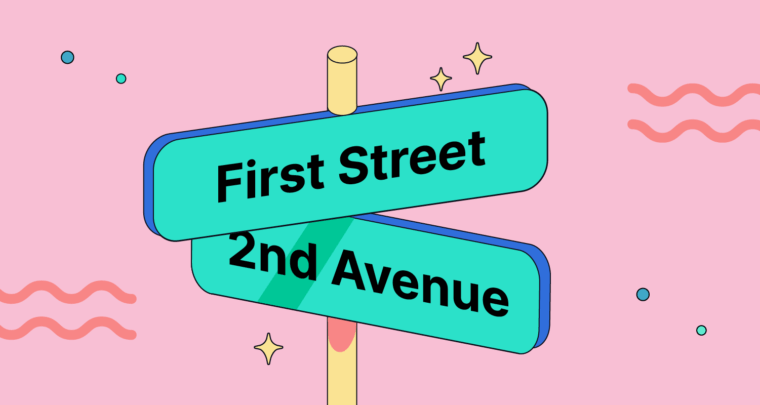
Ordinal numbers are numbers that show position or order in a sequence. For example, the words first and twentieth are ordinal numbers, as are numerals with suffixes at the end like 1st and 20th.
Below, we explain how to write ordinal numbers correctly, along with some examples of ordinal numbers and a brief discussion of the difference between ordinal and cardinal numbers.
What are ordinal numbers?
Ordinal numbers show something’s position in a series, such as its sequential order, ranking, or place in a list. There are two forms of ordinal numbers:
- words spelled out without numerals (first, second, etc.)
- numerals with lettered suffixes at the end (1st, 2nd, etc.)
You can use ordinal numbers as determiners (not my first choice) or nouns (the first to arrive). Many ordinal numbers are used as adverbs to indicate the order of a series, such as a chronological sequence of events or a list that organizes thoughts.
First, grab a flashlight; second, go into the basement; and third, flip the circuit breaker.
Cats make great pets: First, they’re fluffy. Second, they purr. Third, they’re playful.
Some people use an alternative form of ordinal numbers that end in –ly, such as firstly. This makes sense to a lot of English speakers because most adverbs end in –ly, but it’s an unnecessary addition.
What’s the difference between ordinal and cardinal numbers?
Cardinal numbers depict quantities or amounts and are used in mathematics and counting. They are typically depicted as Arabic numerals (1, 2, 3, etc.) but can also be written as words (one, two, three, etc.) if you know when to spell out numbers.
Ordinal numbers are only used for organization and lists, not quantities. In short, cardinal numbers answer “How many?” while ordinal numbers answer “Which position?” If you have trouble remembering the difference between ordinal and cardinal numbers, think of the similarity between ordinal and order.
Ordinal numbers list
Spelled out
- first
- second
- third
- fourth
- fifth
- sixth
- seventh
- eighth
- ninth
- tenth
- eleventh
- twelfth
- thirteenth
[. . .]
- twentieth
- twenty-first
- twenty-second
- twenty-third
- twenty-fourth
[. . .]
- thirtieth
Numerals with suffixes
- 1st
- 2nd
- 3rd
- 4th
- 5th
- 6th
- 7th
- 8th
- 9th
- 10th
- 11th
- 12th
- 13th
[. . .]
- 20th
- 21st
- 22nd
- 23rd
- 24th
[. . .]
- 30th
When to use ordinal numbers
Sequential lists
As mentioned above, ordinals are ideal for sequential lists to keep track of the order of things. This includes the chronological order of events, the order of points to discuss, and any numbered lists.
first item on the agenda
100th customer
He grabbed his coat first and his umbrella second.
Ranking
Ordinals are used to keep track of ranking, such as placement in competitive events or tiered brackets.
first-class ticket
She came in second in the shot put.
Position
You can use ordinals to keep track of location or position in reference to the context.
second in line for ice cream
Turn right at the fourth stoplight.
Informal dates
Especially when speaking, ordinals are typical for mentioning the day in dates. However, there are very particular rules on how to write dates, specifically when you can and can’t use ordinals.
In writing, use ordinals when the day comes before the month.
On the third of July
You can also use ordinals when referencing the day without the month.
Our party is on the twentieth.
However, when writing out a date, avoid ordinals, though you might say July fourth when speaking.
July 4
4 July
Please note that in formal writing, it’s best to spell out the ordinal number instead of using a numeral with a suffix.
Names
Names with numbers, including organization names, use ordinals. However, in writing, the names of people often use Roman numerals but are spoken aloud as ordinals.
The 21st Regiment
Henry VIII (spoken aloud as “Henry the Eighth”)
Floors of a building
Use ordinals to refer to the different floors of a building except for the ground floor.
We live on the twelfth floor.
However, use cardinal numbers if you’re describing the number of floors, such as giving directions or explaining a floor’s location relative to the ground or another floor.
We live twelve floors up.
You have to go down two floors for the pool.
Periods of time
When periods of time are sequential, use ordinals. This refers to centuries and millennia, but also the amount of time passed doing something like school.
the 21st century
a third-year high-schooler
This is my sixth month working here.
Birthdays and anniversaries
Ordinals keep track of birthdays, anniversaries, and other periodic events.
18th birthday
My parents just celebrated their twenty-fifth wedding anniversary.
However, when mentioning ages or the number of years, use cardinal numbers.
27-year-old person
He turns 18 this week.
My parents have been married for twenty-five years.
Fractions
English also uses ordinals for fractions, especially in speech. Specifically, the denominator (bottom number) is spoken as an ordinal.
¼ -> one-fourth
However, the most common fraction, ½, is called simply half or one half—saying one-second is incorrect.
If the numerator (top number) is more than one, the fraction becomes plural.
⅛ -> one-eighth
⅜ -> three-eighths
How to write ordinal numbers
When you write ordinal numbers, be careful about both spelling and punctuation. Ordinals are written differently than their cardinal counterparts, so you may have to learn new rules.
Let’s start with the suffixes. The ordinal suffixes follow the same formulas, so once you’ve mastered 1-20, you can apply them to any ordinal number, no matter how high.
For quick reference, here are some basic guidelines:
- If the number ends in 1, the suffix is –st.
- If the number ends in 2, the suffix is –nd.
- If the number ends in 3, the suffix is –rd.
- If the number ends in 4-9, the suffix is –th.
- If the number is a multiple of 10, the suffix is –th.
- The numbers 11-19 also use the suffix –th.
Furthermore, the ordinal numbers for 1, 2, 3, 5, 8, 9, and 12 all have irregular spellings, so review the ordinal numbers list above if you’re unsure.
Last, don’t forget that two-word numbers use a hyphen, even ordinal numbers. This includes all numbers above twenty, except for multiples of ten. The hyphen in two-word numbers comes in addition to the hyphen in compound adjectives with numbers, so it’s common to have number words with two or more hyphens.
twenty-first-century problems
Ordinal numbers FAQs
What are ordinal numbers?
Ordinal numbers like first or 10th show position or order in a sequence. They describe something’s place in relation to other things, such as chronological order, rank, or simply items in a list.
Ordinal numbers versus cardinal numbers?
While ordinal numbers show position, cardinal numbers show amounts and quantities. Cardinal numbers are used in counting and mathematics. You can tell them apart because ordinal numbers use special suffixes, like the –th in fourth.
When should you use ordinal numbers?
Ordinal numbers have a few more uses besides position and order. They’re used for rankings, dates, periods of time, names, and fractions, among other things.
What are the guidelines for writing ordinal numbers?
When writing ordinal numbers, it’s important to remember the right suffixes. Most numbers use the suffix –th, except for 1 (first), 2 (second), and 3 (third). Numbers over 20 use the suffix of the last number, for example, the ordinal for 53 is fifty–third. Be careful of the numbers 1, 2, 3, 5, 8, 9, and 12, because their ordinals use irregular spelling.





